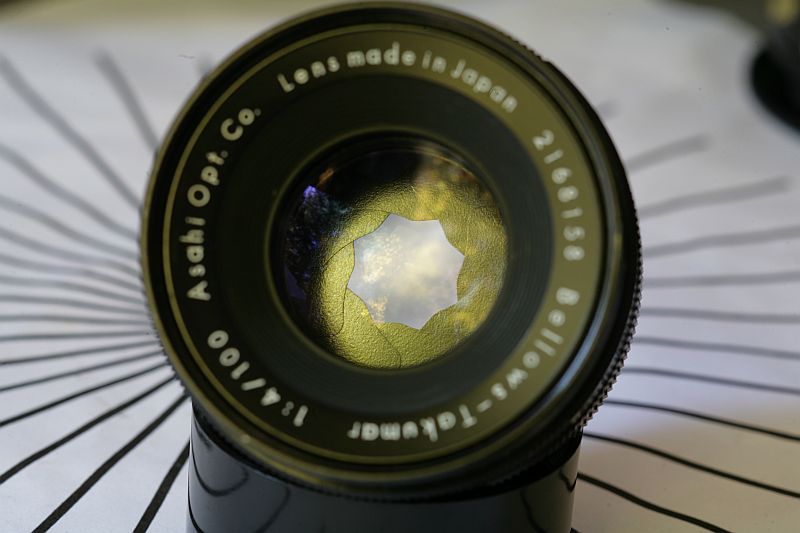| View previous topic :: View next topic |
| Author |
Message |
ZoneV

Joined: 09 Nov 2009
Posts: 1633
Location: Germany
Expire: 2011-12-02
|
 Posted: Wed Feb 05, 2014 9:35 am Post subject: Posted: Wed Feb 05, 2014 9:35 am Post subject: |
 |
|
ZoneV wrote:
Another reason for the aperture form could be the resulting stars at nighttime photography - not bokeh but the stars around small sharp focussed lights.
_________________
Camera modification, repair and DIY - some links to look through: http://www.4photos.de/camera-diy/index-en.html
I AM A LENS NERD!
Epis, Elmaron, Emerald, Ernostar, Helioplan and Heidosmat.
Epiotar, Kameraobjektiv, Anastigmat, Epis, Meganast, Magnagon, Quinar, Culmigon, Novotrinast, Novflexar, Colorplan, Sekor, Kinon, Talon, Telemegor, Xenon, Xenar, Ultra, Ultra Star. Tessar, Janar, Visionar, Kiptar, Kipronar and Rotelar.
|
|
| Back to top |
|
 |
calvin83


Joined: 12 Apr 2009
Posts: 7554
Location: Hong Kong
|
 Posted: Wed Feb 05, 2014 11:01 am Post subject: Posted: Wed Feb 05, 2014 11:01 am Post subject: |
 |
|
calvin83 wrote:
It is possible that the aperture blade will be more durable/long lasting if they are in such shape...
_________________
https://lensfever.com/
https://www.instagram.com/_lens_fever/
The best lens is the one you have with you. |
|
| Back to top |
|
 |
anscochrome


Joined: 23 Dec 2010
Posts: 115
Location: Omaha, NE
|
 Posted: Fri Feb 07, 2014 5:05 pm Post subject: Posted: Fri Feb 07, 2014 5:05 pm Post subject: |
 |
|
anscochrome wrote:
Contax/Yashica 135mm F 2.8 Sonnar has ninja star diaphragm from 3.2-F 4.0, then it goes away:) |
|
| Back to top |
|
 |
kuuan


Joined: 14 Jan 2008
Posts: 4573
Location: right now: Austria
Expire: 2014-12-26
|
 Posted: Sat Feb 08, 2014 6:48 am Post subject: Posted: Sat Feb 08, 2014 6:48 am Post subject: |
 |
|
kuuan wrote:
I am amazed by the samples shown, very, very creative use of the stars!
just found out that not only Canon LTM 1.8/50 II I mentioned already has the star aperture but also Canon LTM f1.8/35. Wonder if there is quite a number of Canon LTM lenses that have it
_________________
my photos on flickr: https://www.flickr.com/photos/kuuan/collections |
|
| Back to top |
|
 |
RokkorDoctor


Joined: 27 Nov 2021
Posts: 1271
Location: Kent, UK
|
 Posted: Mon Apr 18, 2022 7:22 pm Post subject: Posted: Mon Apr 18, 2022 7:22 pm Post subject: |
 |
|
RokkorDoctor wrote:
| visualopsins wrote: |
Three of the Asahi Pentax lenses have this star-shaped diaphragm from ~f/5.6-11 -- the first M42 version of the Macro-Takumar and the two M42 Bellows-Takumars.
Versions with the star-shape diaphragm:
Macro-Takumar 1:4 50mm 1:1 (M42)
Bellows-Takumar 1:4 100mm (M42)
S-M-C Bellows-Takumar 1:4 100mm (M42)
These versions DO NOT have the star-shaped diaphragm:
S-M-C Macro-Takumar 1:4 50mm 1:2 (M42)
S-M-C Macro-Takumar 1:4 100mm (M42)
SMC Bellows-Takumar (K)
(ref: my lens collection  ) )

f/8 |
I just got an S-M-C Bellows-Takumar 1:4 100mm (M42) which indeed has that 8-pointed star aperture at f/8.
Pentax, like other makers, were perfectly capable of making a rounded or octagonal 8-blade aperture when they designed this lens, so one has to assume it is deliberate.
Best reason I can think of (since I have seen a few other macro & bellows lenses mentioned with star-shaped apertures), is that for this lens it has something to do with controlling the appearance of diffraction softening.
The anticipated use for this macro bellows lens would likely be at magnification ratios of 1:1 or even a bit larger. The most star-shaped aperture is located at f/8 on this lens, which under extension for 1:1 magnification or beyond would translate into an f/16 to f/22 equivalent, which is precisely when diffraction is setting in for the 35mm image format. The aperture shape and number of blades is known to affect the diffraction pattern, with longer opposing parallel straight edges leading to the most pronounced directional spreading (noticeable as the sun-stars at f/16 and beyond). It looks like this aperture is designed to avoid longer opposing parallel straight edges precisely at the likely optimum aperture used for trade-of between DOF and diffraction softening. This is a wild guess, but I think the aperture for this lens has been designed to give a less intrusive appearance of the diffraction softening at the most likely used magnification ratios and aperture setting. I suspect mechanical limitations prevent the aperture to be designed as star-shaped for all apertures, hence it becomes octagonal and eventually round for smaller apertures.
My older Minolta MACRO-ROKKOR 50/3.5 preset lens also has this type of star-shaped aperture precisely at f/8, albeit a bit less pronounced. That lens was also likely to be used on a bellows for magnifications of 1:1 and higher (possibly in reverse), thus f/8 would also translate in a diffraction limiting f/16 or f/22 stop under those use conditions.
It would be interesting to see what the diffraction pattern looks like in particular for a star-shaped aperture like this as opposed to a hexagonal/octagonal/round one of the same size.
_________________
Mark
SONY A7S, A7RII + dust-sealed modded Novoflex/Fotodiox/Rayqual MD-NEX adapters
Minolta SR-1, SRT-101/303, XD7/XD11, XGM, X700
Bronica SQAi
Ricoh GX100
Minolta majority of all Rokkor SR/AR/MC/MD models made
Sigma 14mm/3.5 for SR mount
Tamron SP 60B 300mm/2.8 (Adaptall)
Samyang T-S 24mm/3.5 (Nikon mount, DIY converted to SR mount)
Schneider-Kreuznach PC-Super-Angulon 28mm/2.8 (SR mount)
Bronica PS 35/40/50/65/80/110/135/150/180/200/250mm |
|
| Back to top |
|
 |
|
|
|
You cannot post new topics in this forum
You cannot reply to topics in this forum
You cannot edit your posts in this forum
You cannot delete your posts in this forum
You cannot vote in polls in this forum
|
